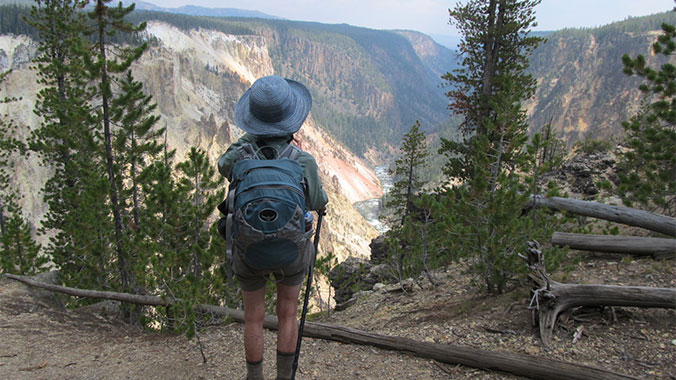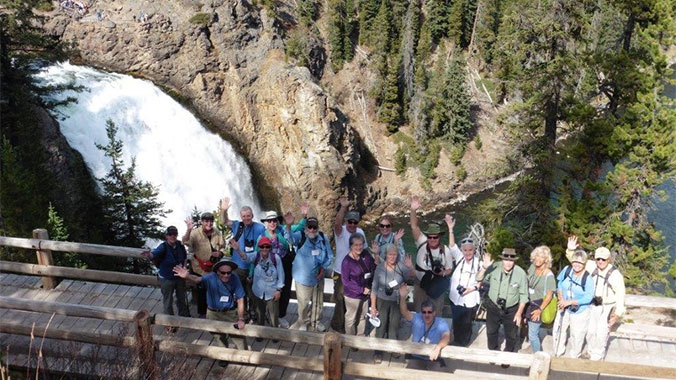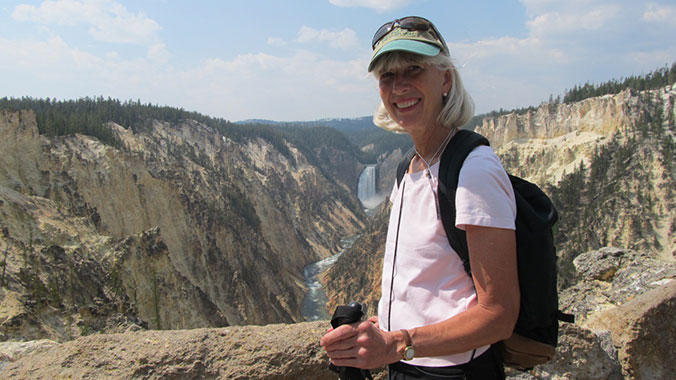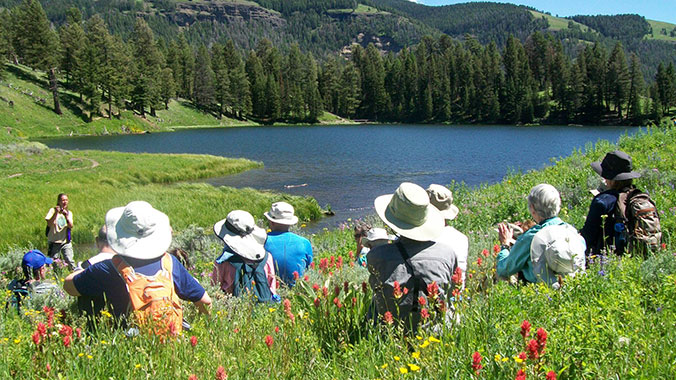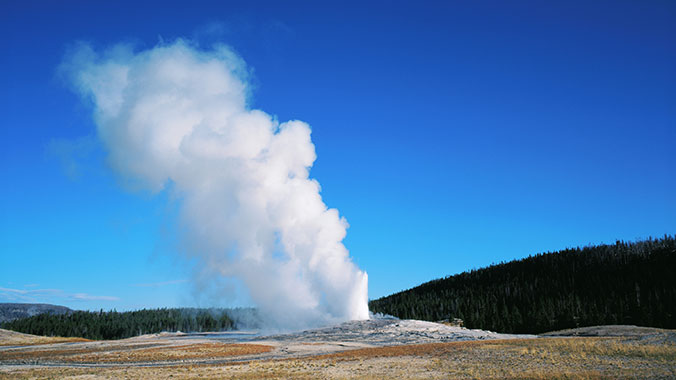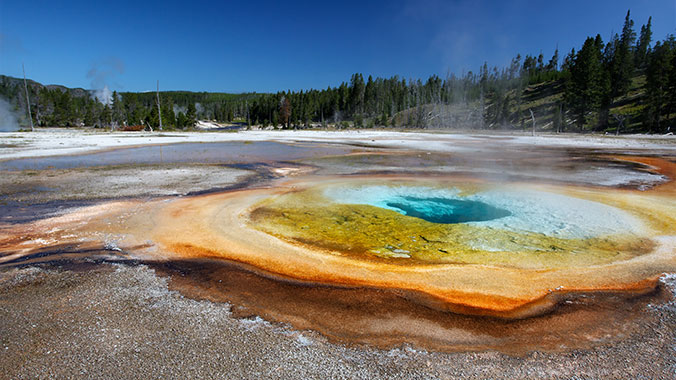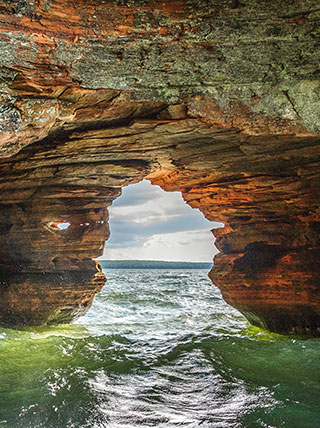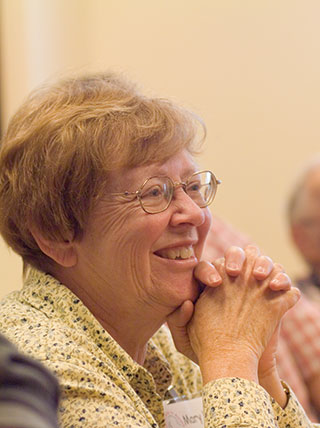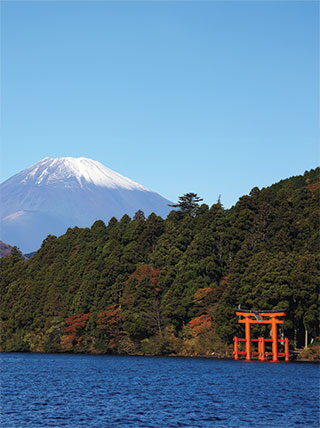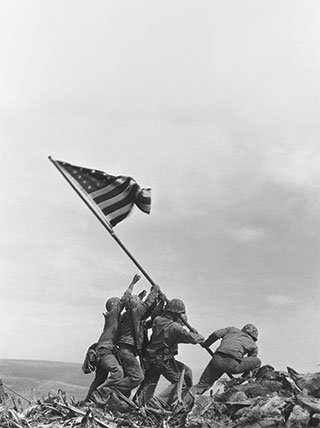Decade of the Wolf, revised and updated edition: Returning the Wild to Yellowstone
by Douglas W. Smith and Gary Ferguson
Research and storytelling meld to document wolf recovery in the Greater Yellowstone Ecosystem. Wolf biologist, Smith, and nature writer, Ferguson, provide an inside look at the Yellowstone Wolf Recovery Project ten years after the controversial decision was made by the U.S. Fish and Wildlife Services to reintroduce wolves into the park. Smith, wolf project leader who has worked with the Yellowstone Wolf Project since its inception, has studied wolves for 25 years. Ferguson, whose writing largely arises from intimate experiences, followed through the seasons, the first 14 wolves released into Yellowstone National Park. Their collaboration offers hard facts and 'impressionistic portraits of individual wolves that reveal their epic lives full of struggle and conquest.' Here is the history of the return of the top predator to Yellowstone.
Searching for Yellowstone: Ecology and Wonder in the Last Wilderness
by Paul Schullery
Eloquent, elegant, truthful and practical - an environmental history of America's best idea, Yellowstone.
Yellowstone Place Names, 2nd edition
by Lee Whittlesey
Yellowstone National Park Historian's well-researched and entertaining reference source for information on many of Yellowstone's place names and their origins.
Roadside Geology of Yellowstone Country
by William Fritz & Robert Thomas
Updated, classic roadside geology book for the Yellowstone Region explains current geological theories.
After the Fires: The Ecology of Change in Yellowstone National Park
by Linda Wallace, Editor
The ravaging fires of 1988 caused many scientists to predict long-term devastation which did not come to pass. This scientific summary by wildlife biologists, ecosystem and forest scientists and landscape ecologists discusses the many things that changed and did not change in the Yellowstone area. Realize the role of fire in the ecosystem and the resiliency of nature.
To Save the Wild Bison: Life on the Edge in Yellowstone
by Mary Ann Franke
The author brings clarity and revelation to one of Yellowstone's most complex struggles by tracing the history of bison and humans into the 19th century and further into the national parks era. Here's discussion of bison management and park policy - the battle over brucellosis, snowmobiles and groomed winter roads, desires of Native Americans, bison and predators.
Restoring a Presence: American Indians and Yellowstone National Park
by Peter Nabokov and Lawrence Loendorf
This first comprehensive account of Indians in and around Yellowstone corrects more than a century of ignorance. Detailed here is Yellowstone's native peoples and their story of a long engagement with a remarkable landscape.
Rough Trip Through Yellowstone, The Epic Winter Expedition of Emerson Hough, F. Jay Haynes and Billy Hofer
by Emerson Hough (Author) and Scott Herring (Editor)
Forest and Stream magazine sent one of its most talented writers, Emerson Hough, to Yellowstone in 1894 to document the decline in bison numbers. Hough, legendary guide Billy Hofer, pioneering photographer F. Jay Haynes and other incredibly tough individuals set out on a 200-mile expedition into Yellowstone's frigid, snow-blanketed landscape. Aboard cumbersome, 12-foot-long wooden skies, these tough men scoured Yellowstone's winter terrain to put together a thorough census of the park's bison and elk. Hough wrote up the expedition in a series of 14 articles which resulted in Congress ultimately passing the anti-poaching Lacey Act and helped turn public opinion against a proposed railroad through the park. His witty and entertaining articles are a wonderful description of winter travel in the park in 1894, immensely entertaining and historically significant. Includes nine historic Yellowstone National Park photos by F. Jay Haynes


